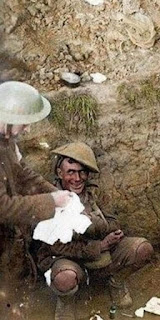Auschwitz gets a new doctor: “the Angel of Death”
Auschwitz gets a new doctor: “the Angel of Death”
On May 24, 1943, the extermination camp at Auschwitz, Poland, receives a new doctor, 32-year-old Josef Mengele, a man who will earn the nickname “the Angel of Death.”
Born March 16, 1911, in Bavaria, Mengele studied philosophy under Alfred Rosenberg, whose racial theories highly influenced him. In 1934, already a member of the Nazi Party, he joined the research staff of the Institute for Hereditary Biology and Racial Hygiene.
Upon arriving at Auschwitz, and eager to advance his medical career by publishing “groundbreaking” work, he began experimenting on live Jewish prisoners. In the guise of medical “treatment,” he injected, or ordered others to inject, thousands of inmates with everything from petrol to chloroform. He also had a penchant for studying twins, whom he used to dissect.
Mengele managed to escape imprisonment after the war, first by working as a farm stableman in Bavaria, then by making his way to South America. He became a citizen of Paraguay in 1959. He later moved to Brazil, where he met up with another former Nazi party member, Wolfgang Gerhard. In 1985, a multinational team of forensic experts traveled to Brazil in search of Mengele. They determined that a man named Gerhard, but believed to be Mengele, had died of a stroke while swimming in 1979. Dental records later confirmed that Mengele had, at some point, assumed Gerhard’s identity, and was in fact the stroke victim.
A fictional account of Josef Mengele’s life after the war was depicted in the film Boys from Brazil, with Mengele portrayed by Gregory Peck.





Comments
Post a Comment